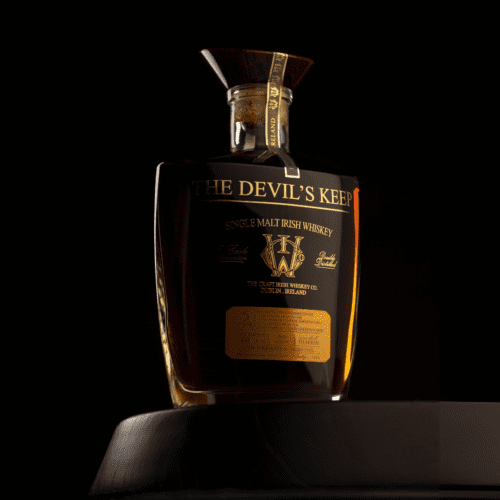We’ve talked at length about where whiskey gets its flavour from. Now let’s take a closer look at what those basic flavours are. Matured spirits are most commonly broken down into one of four fundamental groups: fruity, smoky, sweet, and spicy. It’s not always that easy, of course. Many overlap between several—if not all—of these categories. However, even in these circumstances there is some dominant taste (or top-note) that will stand out in the crowd. So here’s how to tell the difference between each…
Fruity Whiskey
We all perceive fruitiness differently, depending on where in the world we grew up. But generally speaking, when we talk of fruity whiskey we’re talking about liquid that holds tropical notes—banana, mango, pineapple; citrus fruit, such as grapefruit or orange; or orchard fruits like apples, pears, persimmon. And don’t forget the dried stuff either: raisins, sultana, prunes. You can expect to find these sorts of tonalities in a traditional triple distilled Irish single malt. Or—famously—from Speyside scotch. Clearly these are pretty popular flavours, because the aforementioned subcategories of whiskies are among the most widely consumed sorts of spirits on the planet. The results are in and people can’t get enough of their fruity whiskey.
Smoky Whiskey
Less accessible to the masses is the smoky stuff. Though the folks that are into it are really into it. The most famous (or infamous, depending on whom you ask) examples are peated scotches from the Hebridean Isle of Islay. These liquids are distilled using barley that was malted over peat-fueled fires. So there’s a good reason why the resulting whisky has smoky flavour: it was born of smoke! Laphroaig, Lagavulin and Ardbeg are all famous for producing this style. If you’ve been intimidated by that stuff, just remember that smoke can manifest itself in many ways. It doesn’t have to hold the iodine, tar, bandaid-like notes more familiar to Islay. It can mean tangy barbecue smoke, or tobacco leaf. You’ll pick up plenty of the latter in a bottle of Bushmills 16 Irish Single Malt. And there’s nothing at all peated about that lovely expression. Cigars, dark coffee, roasted chocolate—all these pleasant touchstones veer into the smoky section of the flavour map. So keep an open mind when it comes to this often misunderstood category.
Sweet Whiskey
Toffee, vanilla, honey, butterscotch….A confectioner’s delight. These sorts of flavours are all common tasting notes for sweet whiskey. So it’s no surprise that this part of the chart is super accessible to the masses. I mean, after all, who doesn’t love ice cream? Delve into this type of whiskey and you can have your cake and drink it, too! The most obvious example is Bourbon whiskey. This style, specific to the United States, must be made mainly from corn and aged in charred white oak barrels which have never before been used. These production requirements result in a liquid that leans heavily on caramel, cinnamon, vanilla and all sorts of candied delight. Since most people naturally have a predisposition towards sweet, Bourbon is often an entry point for people into the world of whiskey. Plenty of them stay there for life. And there’s absolutely nothing wrong with that. There are other types of sweet whiskey outside of the US though, of course. Canadian Rye can go heavy on the honey. And blended Scotch and Irish whiskies are also soft and supple on the tongue. The best offerings give some of that saccharine goodness to the palate while surrendering nothing to complexity or depth.
Spicy Whiskey
Now back to something polarising. This tongue tickling category is typically not for beginners. It takes some effort on the part of the drinker to suss out the exceptionality here. In other words: taste and taste some more. Expose yourself to as many sorts of whiskies as you can. Then some day, something will hopefully click and you’ll realise that spiciness can be beautiful in a dram. It can also express itself in a multitude of ways. The most obvious is chilli pepper, something that actually emulates the sweat-inducing components of capsaicin. But there’s also alcoholic heat. It’s something that you’ll often find in cask strength whiskey. This style is never watered down after exiting the barrel in which it aged. And it’s not uncommon for fans to take a sip of something bottled this way and say, “wow, that’s spicy!” They mean it as a compliment. Then there’s clove, cinnamon, nutmeg—the notes you associate with the spice rack. You’ll often find them lurking in a pour of American Rye.
Maybe these aren’t the sorts of flavours you’re wanting in your whiskey. Maybe you don’t know exactly what you want in your whiskey. We’re here to help you in that journey…And make no mistake, it is an ongoing one. If you’re just getting started, it’s helpful to think of things you do know you like: foods, soft drinks, aromas, even seasons and holidays. Make note, take self-inventory, and then reflect on what sort of whiskey flavours are most in-line with these preexisting preferences. The basic, four-point flavour matrix is helpful in contextualising it all. But just remember that rules are made to be broken. Even the most ardent of whiskey enthusiasts is still discovering new flavours in new whiskies. And evolving their palate as they go. It’s all part of the fun. The best sort of science is one that you can sip.










